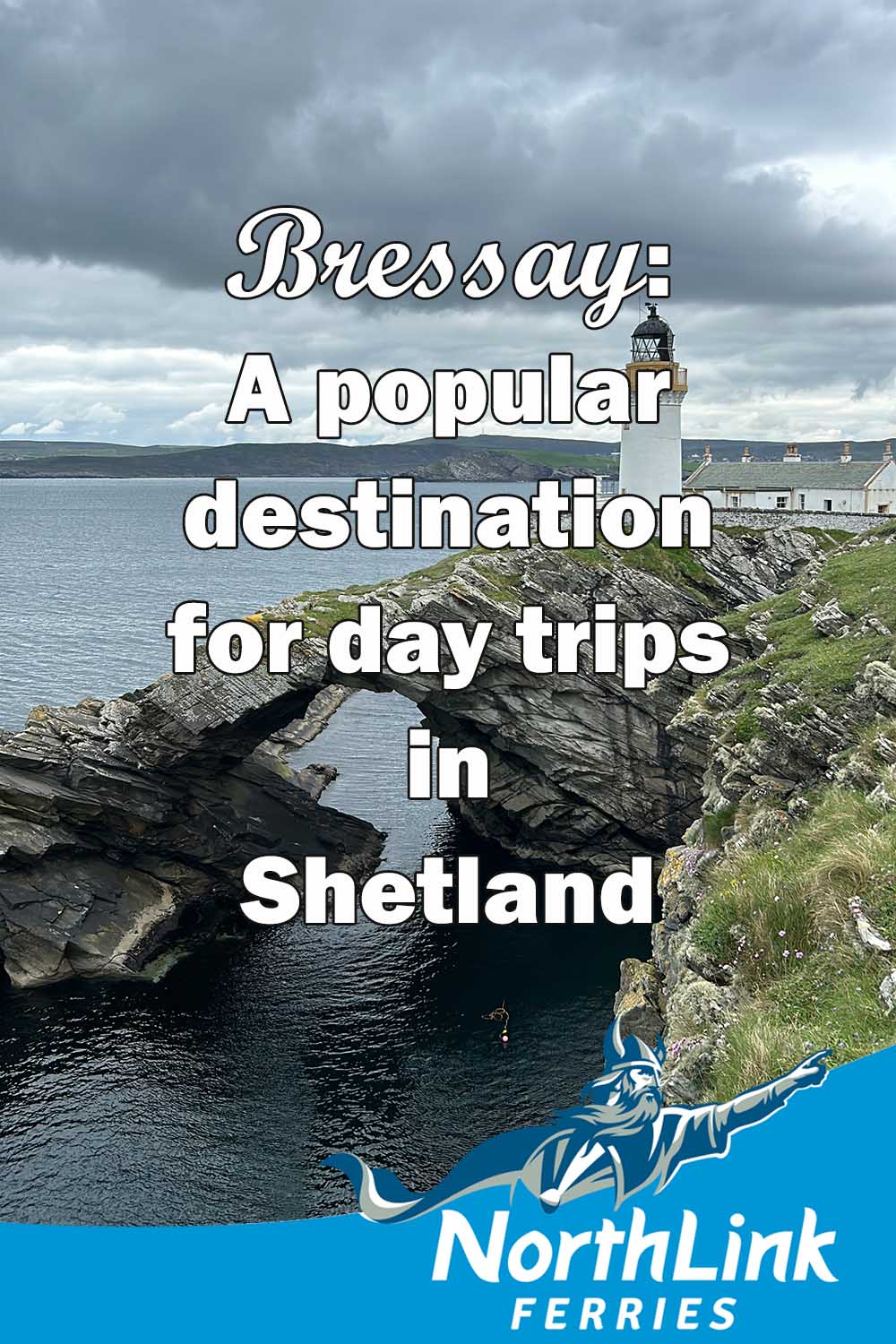Bressay: A popular destination for day trips in Shetland
Shetland-based archaeologist and crofter Chris Dyer explores his home island of Bressay.
Bressay’s rich cultural heritage stretches back over 6,000 years with an array of impressive historic sites attesting a settled longevity of human history.
Situated less than one mile from the NorthLink Ferries terminal in Lerwick and just a short 7-minute vehicle and passenger ferry journey from the capital, this charming island is home to 350 people and exemplifies the very best of Shetland in miniature.
Spectacular coastlines, abundant wildlife and historic sites spanning millennia can be viewed alongside hospitality and accommodation providers, making Bressay a popular destination for day trips and longer visits alike.
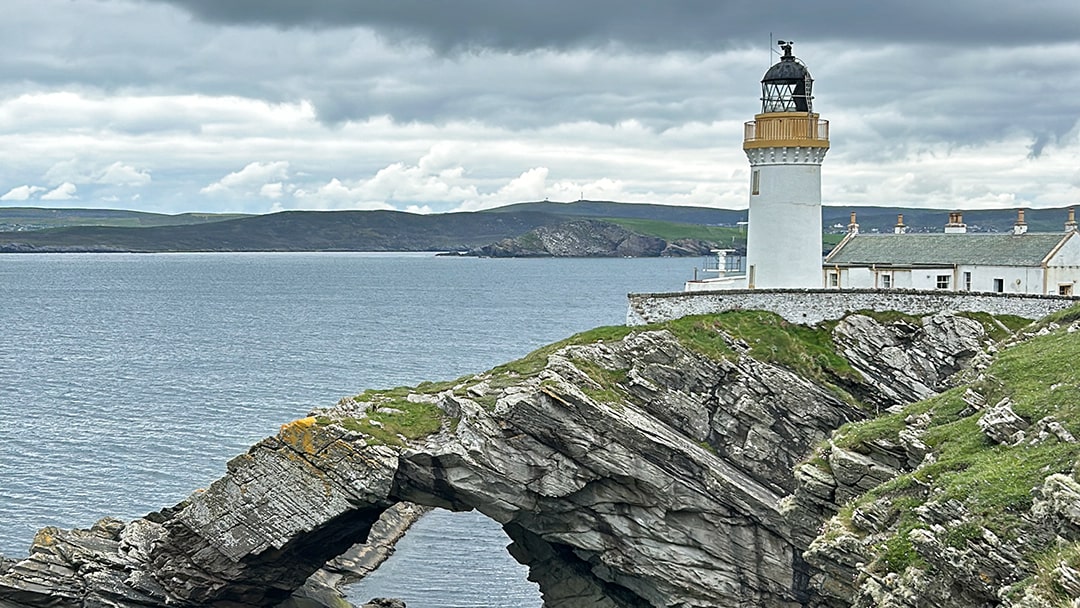
Bressay Lighthouse
Arriving aboard NorthLink Ferries, the iconic mid-Victorian Bressay lighthouse stands on a rocky headland beneath the high sandstone cliffs of the Ord, guarding and protecting the southern entrance to Lerwick harbour. For over 150 years, Robert Stevenson and his descendants designed most of Scotland’s lighthouses. Battling against the elements, the Stevensons constructed wonders of engineering that have withstood the test of time.
Bressay Lighthouse was constructed under the authority of the Northern Lighthouse Board and was first lit on 31st August 1858. It was one of four lighthouses erected in Shetland between 1854 and 1858, designed by brothers David and Thomas Stevenson. The complex comprised a lighthouse tower, a principal keeper’s house, two assistant keepers’ houses, engine room and fog horn. In 2012, the light tower was decommissioned and replaced by a flashing LED beacon, mounted on the former foghorn tower whilst the original light and mechanism is housed within Shetland Museum and Archives in Lerwick.
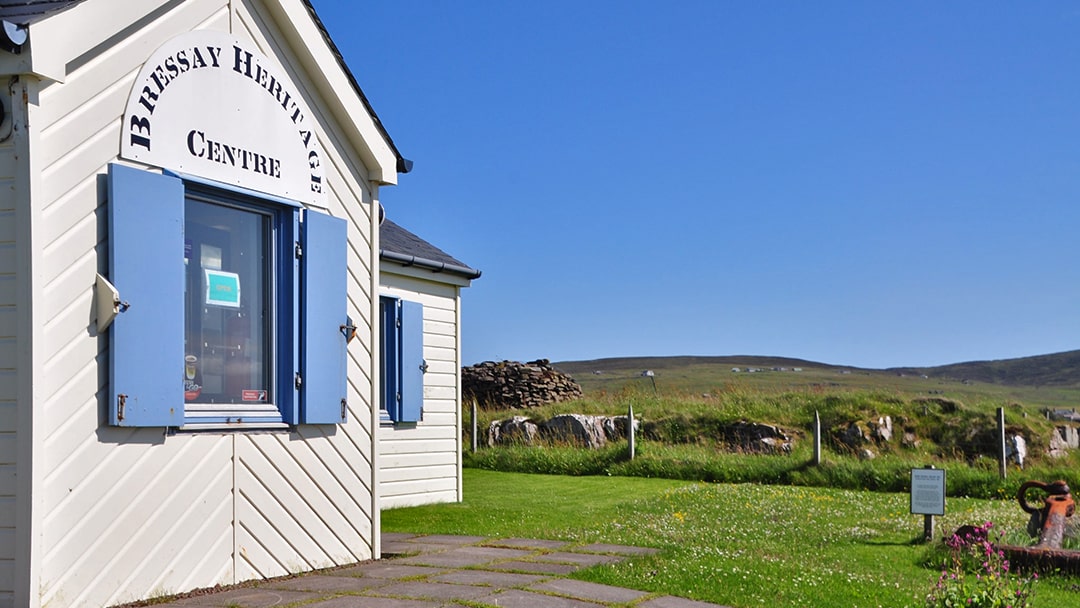
Bressay Heritage Centre
The Bressay ferry regularly departs from central Lerwick, arriving adjacent to the Bressay Heritage Centre. Open between mid-May and September on Wednesday, Friday and Sunday, the exhibition space interprets and curates the natural and cultural heritage of the island.
They also have displays of current research and local interest including a reconstruction Bronze Age burnt mound and, most recently, Bressay’s quarries and stone masons – which were responsible for producing and transporting building stone and roofing slate to Lerwick.
The nearby Maryfield House Hotel is an award-winning, family-run bar, restaurant and accommodation provider situated within a prominent early nineteenth century house and walled garden offering impressive views of the harbour and Lerwick waterfront.
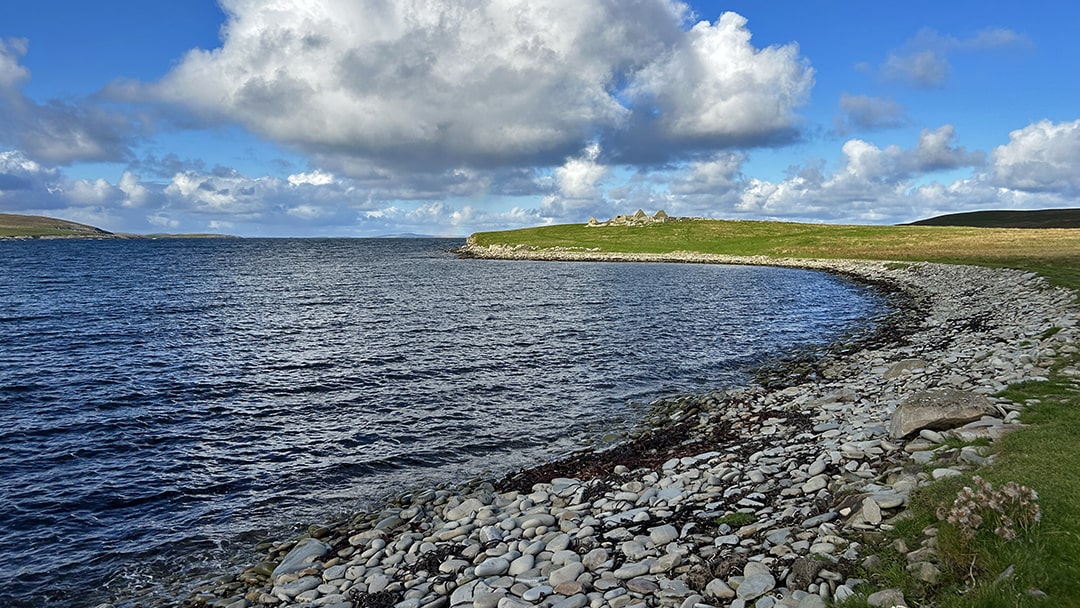
A Rich History and Heritage
Bressay’s rich cultural heritage stretches back over 6,000 years with an array of impressive historic sites attesting a settled longevity of human history. Whilst the earliest reference to the island may have been in 1263AD as ‘Breiðoy’ (Old Norse “broad island”), a diverse history of different time periods remains preserved in the landscape due to building in stone, the absence of a large population, and light grazing agriculture.
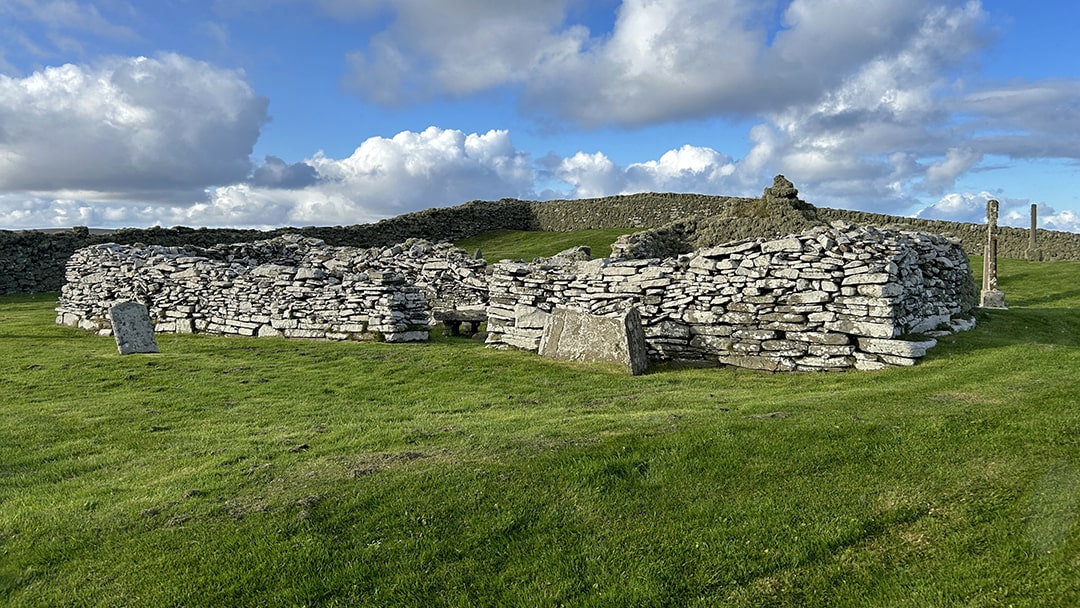
One of the best examples may be enjoyed during a leisurely walk at Culliesbrough, on the north-east side of Bressay. This sheltered bay and rich fishing grounds has attracted settlement since at least the Bronze Age, almost 4,000 years ago, in the form of a surviving, enigmatic burnt mound. Subsequently, an Iron Age broch – a circular defensive tower symbolising grandeur and status – was established and its remains now lie as earthworks beneath the early Christian chapel and kirkyard.
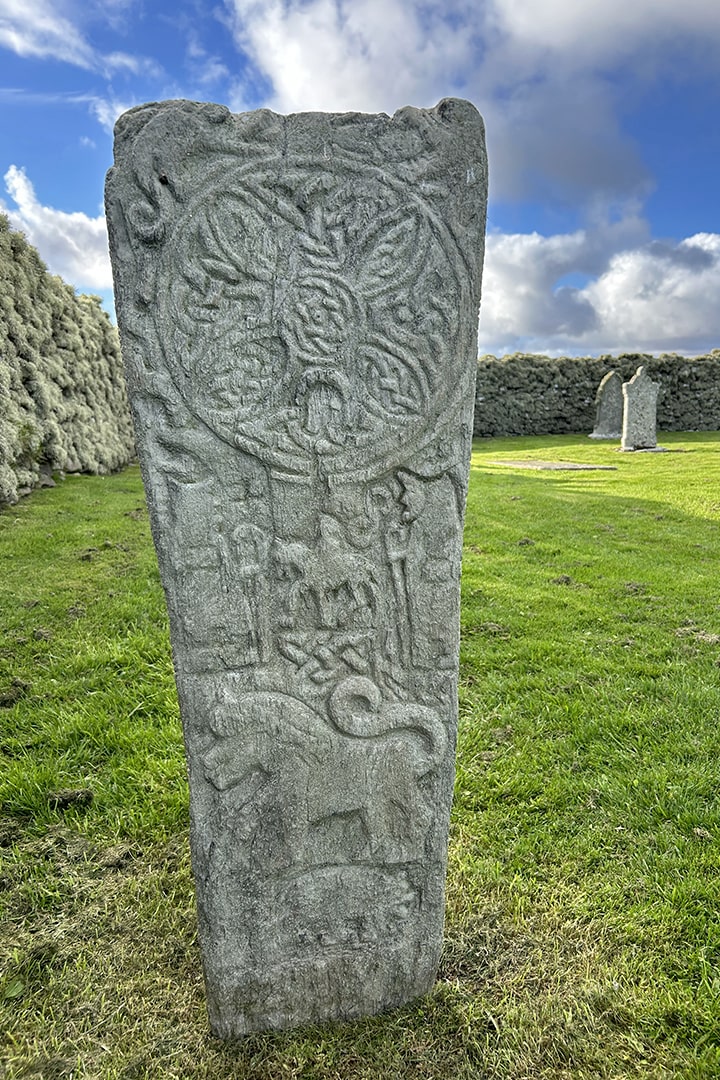
During the 19th century, a rectangular Pictish cross slab with ogham inscriptions was found nearby; a replica has been erected within the burial ground, whilst the original now resides within the National Museum of Scotland in Edinburgh. Viking longhouses may be visited, in addition to the multiple houses and byres of the village that was only finally vacated in the early 20th century.

Watching over it all is the Anderhill tower – a 1906 naval lookout with unparalleled panoramic views of the eastern coastline of Shetland. It played a vital role in military conflict observation during the 20th century before latterly being used by the coastguard until the mid-1960s. Indeed, two surviving Great War six-inch guns at the northern and southern extremity of Bressay, at Aith and the Bard respectively, alongside Second World War anti-aircraft infrastructure and camps at Creuster and Setter, reflect the island’s significant military heritage.
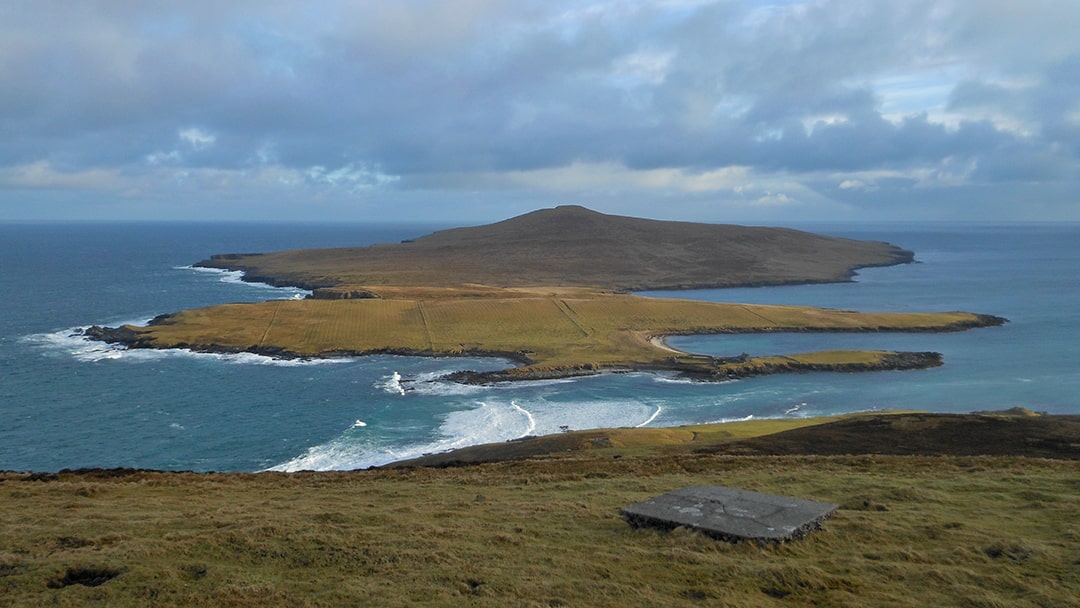
Noss National Nature Reserve
The natural heritage of Bressay is encapsulated by the adjacent National Nature Reserve of Noss, recognised as one of Europe’s premier wildlife sites. The dramatic, near-vertical sandstone cliffs of the Noup have weathered over almost 400 million years to provide the perfect honeycombed ledges for thousands of breeding seabirds including gannets, kittiwakes, shags and fulmars, whilst puffins and inland moorland birds such as Great Skuas may also be viewed.
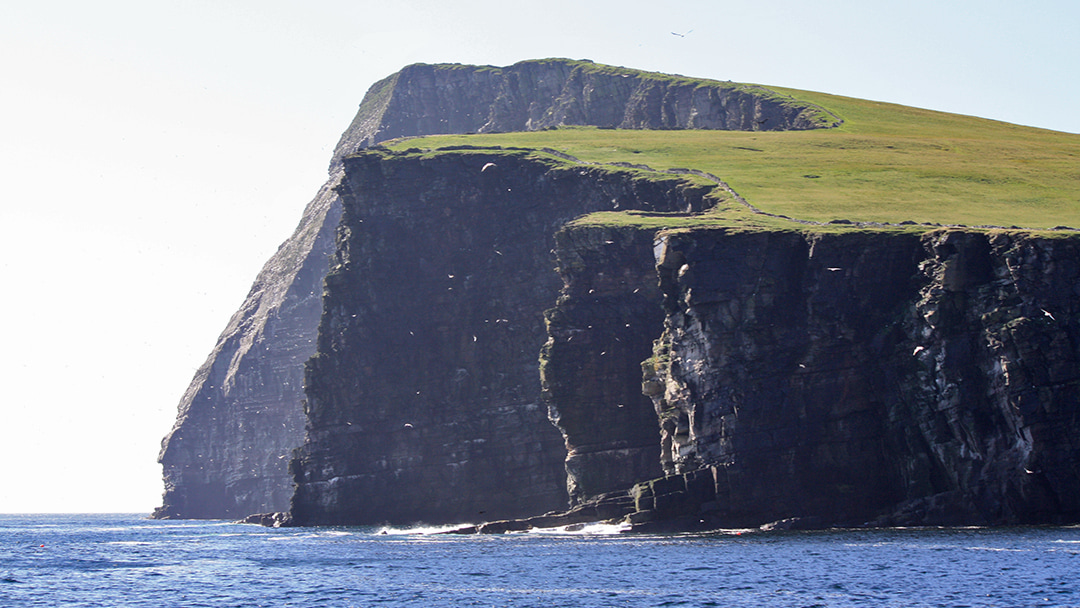
Today, Noss is an uninhabited island and part of a working sheep farm. A management agreement between the Garth Estate and NatureScot facilitates public access between May and September through two seasonal wardens. Weather-permitting, travel to the island is by a small inflatable boat from the Bressay shoreline before orientation and introduction within the house of Gungstie.
In the late 19th century, the Marquis of Londonderry rented Noss for the breeding of Shetland ponies destined for mines in the north of England – a true contrast between the rural, maritime beauty of the island and the industrial life to which the ponies were exported. The restored pony enclosure can be seen along with a crop-drying kiln and an early Christian chapel, highlighting the area’s rich natural and human history.

Community and Life in Bressay
Bressay Development Ltd is based centrally within the island at Speldiburn, the site of the former island primary school. The community-led organisation aspires to secure and sustain a vibrant future for Bressay. An active, connected, thriving and resilient community runs the excellent Speldiburn Café, where home-baking and refreshments can be enjoyed alongside a Good As New Shop and office space for local artists and knitwear businesses.
Speldiburn is the finish point for the weekly Bressay Parkrun, a 5km run or walk held every Saturday, founded in 2018 and enjoying regular and visiting attendees as the most northerly Parkrun in the United Kingdom.
Bressay can be visited year round via a short journey across Lerwick harbour. For the current timetable, see Timetables – Shetland Islands Council or phone 01595 745804.
 By Chris Dyer
By Chris DyerChris Dyer is a Shetland-based archaeologist and historian with more than 20 years of experience, and is the owner of the sustainable agricultural holding, Garths Croft, in Bressay.
Pin it!